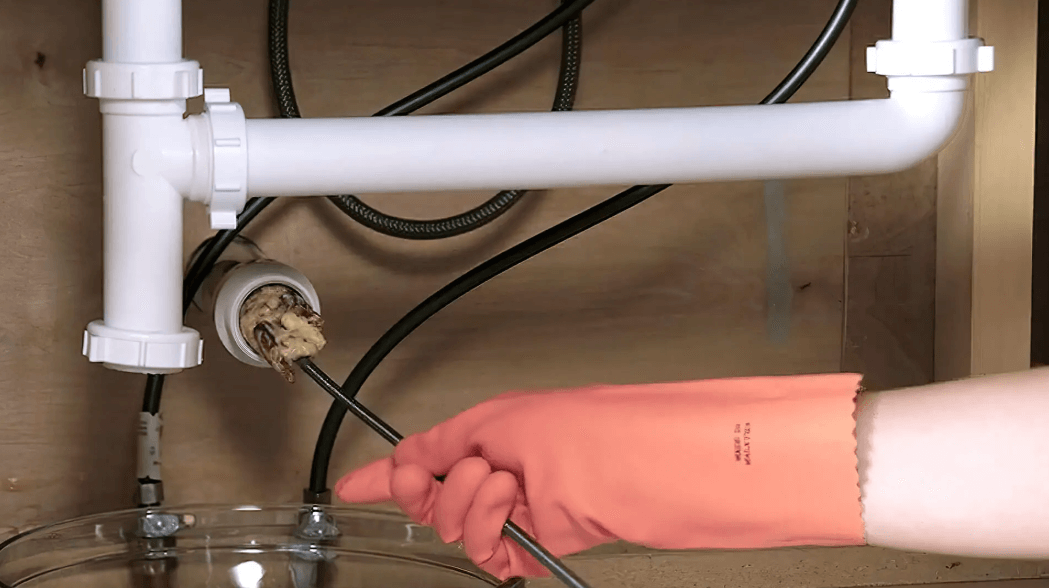The T-bar or landmine row is a compound movement that helps you build a wider and thicker back. It is one of the most popular and effective exercises for growing and strengthening your back muscles. As the T-bar row is a horizontal pulling movement, multiple back muscles work together to pull the weight. These muscles are lats, rhomboids, traps, posterior delts, teres major, and teres minor.
While it is a great exercise for the back, it has some limitations. For example, it requires more equipment and setup, and you may not have access to the T-bar machine. Or you want to try some new exercise that targets the same muscle group and gives you the same good result as a T-bar row. Why worry? We have brought you some amazing options to opt for instead of a T-bar. So, without any further delay, let’s deep dive into the best alternatives to T-bar.

BENT-OVER BARBELL ROW
One of the most popular exercises for the back is the bent-over row. It’s an old-school exercise guaranteed to add mass to your back and give you the strength to pull more than you have before and can be termed as an effective alternative to T-bar. Bent over rows require a good form to decrease the risk of injury. Bent-over rows are usually performed with a barbell but can be performed using a variety of different resistance tools (such as a band, dumbbells, or machines).
INSTRUCTIONS TO PERFORM
- Stand with feet shoulder-width apart.
- Bend at the hips and slightly at the knees, keeping your back straight and parallel to the floor. Hold the barbell with an overhand grip (palms facing down).
- While keeping your elbows close to your body, pull the barbell towards your lower chest.
- Hold for 1 second and then slowly lower the bar back to the starting position, with your arms extended and the barbell plates just off the ground. Repeat this for 8–12 repetitions and complete 3–4 sets.

Single-arm dumbbell row
Another alternative to T-bar is the single-arm dumbbell row that is a variation of the dumbbell row. It is one of the popular exercises for training your back and gaining muscle mass. This exercise works with lats, rhomboids, traps, and deltoids. A single-arm dumbbell row can be very useful for those who find other rowing exercises difficult to perform. It helps in building the upper back and improves muscle balance by isolating each side at a time.
INSTRUCTIONS TO PERFORM:
- Start by putting your knee and hand on the bench and your other foot on the ground. With the free hand, grab the dumbbell.
- Pull the dumbbell towards your hip, squeezing your back muscles.
- Lower the dumbbell back to the starting position in a controlled manner. Repeat this for 8–12 repetitions from one hand, then switch to the other hand.
SEATED CABLE ROW
The seated cable row is a great alternative to the T-bar row. This exercise is like a bent-over row. In this exercise, you sit down on the cable machine while performing the exercise. Seated rows help strengthen your upper body. The seated row works several muscles in your back and arms. These include lats, rhomboids, traps, and biceps.
INSTRUCTIONS TO PERFORM:
- Sit down on a cable machine with a low pulley attachment. Adjust the seat so that your knees are bent at a 90-degree angle and your feet are flat on the floor.
- Grab the handle with an overhand grip, with your palms facing away from you. Pull the handle towards your chest, keeping your elbows close to your sides, and squeeze your back.
- Pause for a count, then slowly extend your arms out straight to the starting position. Repeat this for 8-12 repetitions for 3-4 sets.
INVERTED ROW
Inverted rows are a good bodyweight T-bar alternative exercise. It engages the lats, traps, and rhomboids. Inverted rows can be performed with a barbell on a squat rack or Smith machine. This exercise is very useful for beginners as it improves upper-body strength. This exercise reduces the risk of injury by improving posture.
INSTRUCTIONS TO PERFORM:
- Set up a bar at waist height in a squat rack or smith machine.
- Lie underneath the bar with your hands shoulder-width apart and your palms facing up.
- Hang from the bar with your body straight, keeping your core engaged. Pull yourself up until your chest touches the bar and squeeze your back muscle.
- Slowly lower yourself back to the starting position. Repeat this for 8–12 repetitions according to your goal.

PULL-UPS
The pull-ups are an upper-body strength exercise and an excellent alternative to the T-bar row. It is a functional bodyweight exercise, which is great for building upper-body strength and engaging multiple back muscles at once. The pull-ups are an advanced bodyweight exercise that helps in building a V-shape back and strengthens the arms and shoulder muscles. It can be performed with different grips (wide, neutral, or underhand) for variation.
INSTRUCTIONS TO PERFORM:
- Start by standing directly below a pull-up bar. Place your hands in an overhand grip with your hands slightly further than shoulder-width apart.
- Hang from the bar with your hands fully extended engage your core and bend your elbow and pull your body upward.
- Focus on using your back and arm muscles to pull your body. Squeeze the back muscles at the top of the movement and hold for a moment.
- Extend your elbow and lower your body back down to the hanging position. Repeat this for desired reps as of your capability. CHEST
SUPPORTED DUMBBELL ROW
Another excellent alternative to the T-bar row. The chest-supported dumbbell row is a variation of the dumbbell bent-over row performed with your back supported on an incline bench, which takes the strain off your lower back.
INSTRUCTIONS TO PERFORM:
- Start by setting up an incline bench at 45 degrees. Grab a pair of dumbbells and lie face down on the bench with your chest.
- Put your feet firmly on the floor, and let your arms hang straight down, palms facing each other.
- Draw your shoulder blades back and down as you pull the dumbbell toward the lower part of your ribcage.
- Pause for a moment at the top of the movement, then smoothly lower the barbell back to the starting position with control.
- Repeat this for 8–12 repetitions and complete 3–4 sets.
Machine Low Row
The low-row machine is an excellent alternative to the T-bar row. This exercise helps in targeting various muscles in the back, including the lats, traps, and rhomboids. The Low row is performed on a machine that allows you to row the weight towards your stomach. This exercise provides a stable seated position and is effective for isolating the back muscles in control.
INSTRUCTIONS TO PERFORM:
- Adjust the seat height to ensure proper alignment and comfort.
- Grab the handles with an overhand or underhand grip. Sit up straight with your shoulders back and core engaged.
- Start with your arms fully extended. Pull the handles towards your lower chest, squeezing your shoulder blades together and engaging your back muscles.
- Pause for a moment in the contracted position, squeezing your back muscles.
- Slowly extend your arms back to the starting position with proper control.
- Repeat this for 8-12 repetitions for 3-4 sets.
Wide-Grip Cable Row
The wide-grip cable row is a variation of the cable seated row and a great alternative to the T-bar row. This exercise is the same as seated row but with a wider grip. In this exercise, you sit down on the cable machine while performing the exercise. Wide-grip rows help strengthen your upper body. The wide-grip row works several muscles in your back, which include lats, rhomboids, and traps. The wide grip helps you better contact your back.
INSTRUCTIONS TO PERFORM:
- Sit down on a cable machine with a low pulley attachment and attach a wide grip handle. Adjust the seat so that your knees are bent at a 90-degree angle and your feet are flat on the floor.
- Grab the handle with an overhand grip, with your palms facing away from you.
- Pull the handle towards your chest, keeping your elbows close to your sides, and squeeze your back.
- Pause for a count, then slowly extend your arms out straight to the starting position.
- Repeat this for 8-12 repetitions for 3-4 sets.

BENT-OVER DUMBBELL ROW
The bent-over dumbbell row is one of the best alternatives to the T-bar row and muscle-building exercises for your back. This exercise works with lats, rhomboids, traps, and deltoids. A bent-over dumbbell row can improve the stability of your spine. This exercise requires good form to decrease the risk of injury. One best things about this exercise is that you don’t require more equipment; you can simply perform with two dumbbells.
INSTRUCTIONS TO PERFORM:
- Stand with your feet shoulder-width apart and bend over at the waist, keeping your back straight.
- Hold a dumbbell in each hand with an overhand grip, with your arms hanging down at your sides.
- Pull the dumbbells up to your chest, keeping your elbows close to your sides.
- Squeeze your back muscles at the top of the movement, then slowly release the dumbbells back to the starting position.
- Repeat for 8-12 repetitions and perform 3-4 sets.
PENDLAY ROW
Another good alternative to the T-bar row. The pendlay row is one of the most misunderstood and underrated exercises in the gym. A variation of the bent-over barbell row is performed with a dead stop at the bottom of each rep. Pendlay row promotes explosive strength and power. Unlike many other row variations where the weight is suspended between reps, the Pendlay row returns the weight to the floor every time.
INSTRUCTIONS TO PERFORM:
- Start with setting up a barbell with your desired weight. Stand with your feet shoulder-width apart and bend over at the waist, keeping your back straight.
- Grab the barbell with an overhand grip, with your hands slightly wider than shoulder-width apart. Pull the barbell up to your chest, keeping your elbows close to your sides.
- Lower the barbell back to the starting position and let the barbell touch the floor before you begin the next rep.
- Repeat for 8-12 repetitions for 3-4 sets.

Conclusion
While the T-bar row is a fantastic exercise for building a thicker, wider back and strengthening the upper back, sometimes you may not have access to the T-bar or you want to try some other exercises that give you the same good result as the T-bar. Just because you don’t have the T-bar doesn’t mean you can’t get the same benefits from the other rowing exercises. These alternatives can give you all the benefits of the T-bar row. Don’t miss out on these fantastic back exercises.








